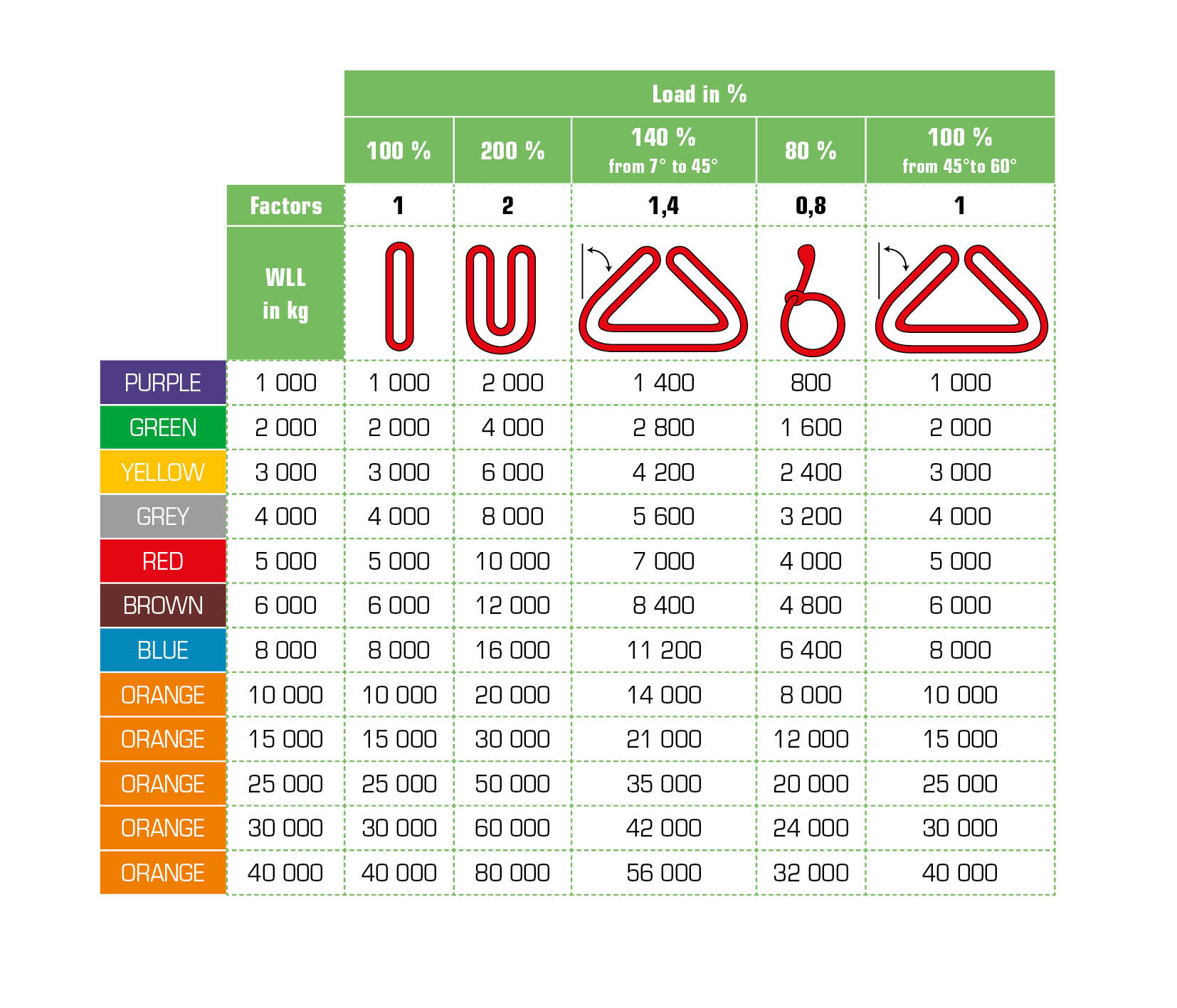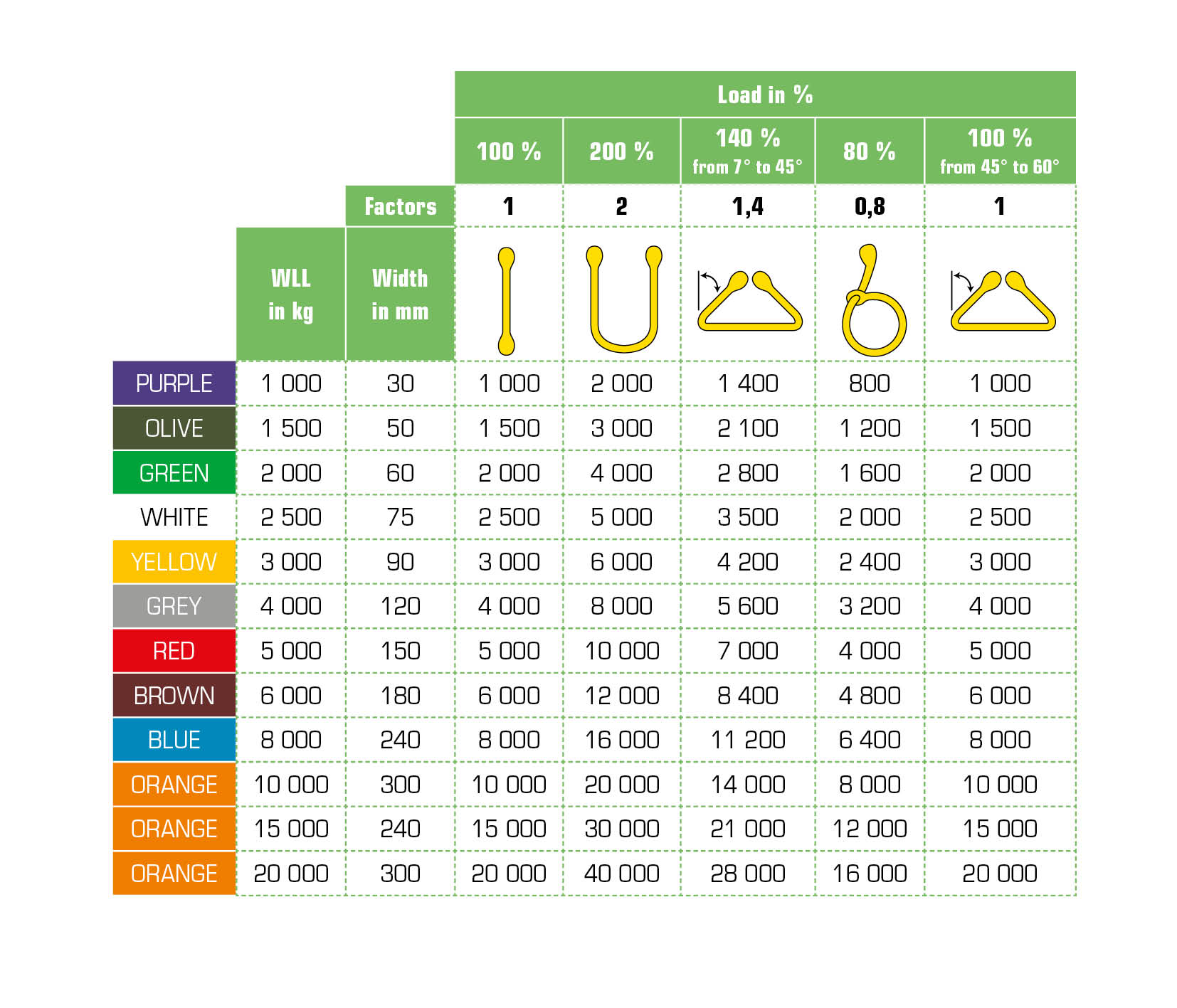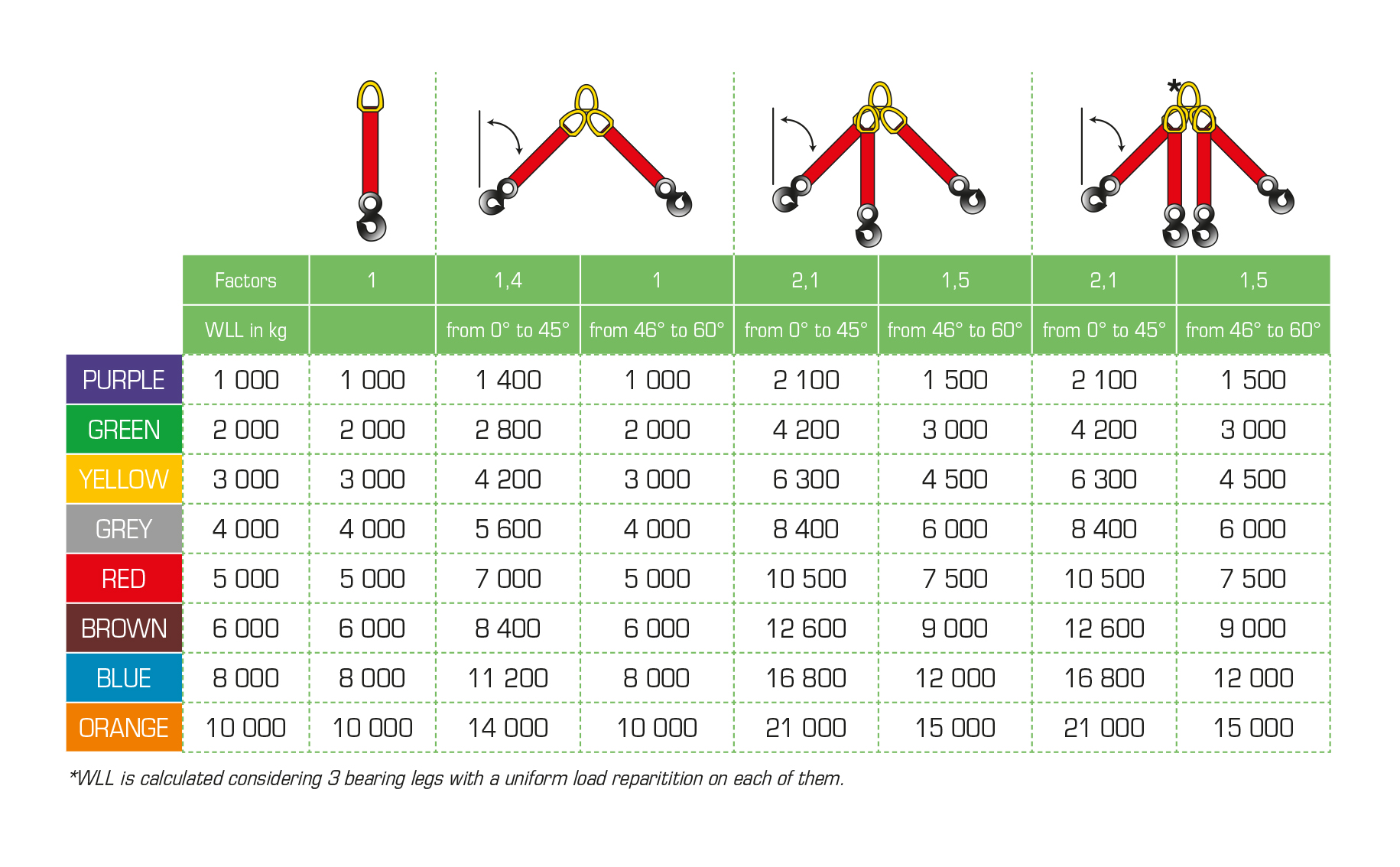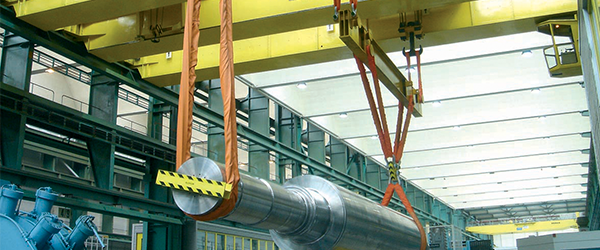When selecting your textile sling model, you must take into account – among other things – its Working Load Limit (WLL) depending on the mode of use and the load to be lifted.
Very important: WLL (Working Load Limit) mentioned must be strictly applied according to the operating conditions specified in the standards 1492-1 and 1492-2.
Load configuration chart: meaning
Load configuration charts enable the WLL of a sling to be calculated taking into account the configuration of the lifting operation. This helps you choosing the most suitable equipment for your situation which will ensure safe slinging.
The configuration mode factors are a coefficient applied to the WLL of a sling to take into account the geometry of the sling (number and angles of legs) and the consequence of the bending of certain components. Depending on the lifting criterion and method, the WLL of the sling will be increased or reduced.
Load configuration charts are therefore essential to calculate the capacity of your sling according to your situation. They differ depending on the type of slings.
Roundslings load configuration chart
In order to better determine the equipment you need, the table below summarizes the different elements to take into account when choosing round slings.

Flat webbing slings load configuration chart
In order to choose the flat webbing sling that suit your situation, the table below summarizes the different configurations to take into account to make the right choice.

Multi legs slings load configuration chart
To help you make the right choice of multi-leg sling, we explain the mode factors of these in the table below.

For a sling with four legs, the capacities are indicated considering 3 bearing legs with an equal distribution of the load on each of them
The load configuration chart are essential in the calculation of the load to be lifted and the choice of the sling. It is important to pay close attention to the different criteria to be taken into account depending on the type of slings to be used. Understanding the load configuration chart means ensuring the right choice of slings and a smooth lifting operation thanks to optimal safety.

